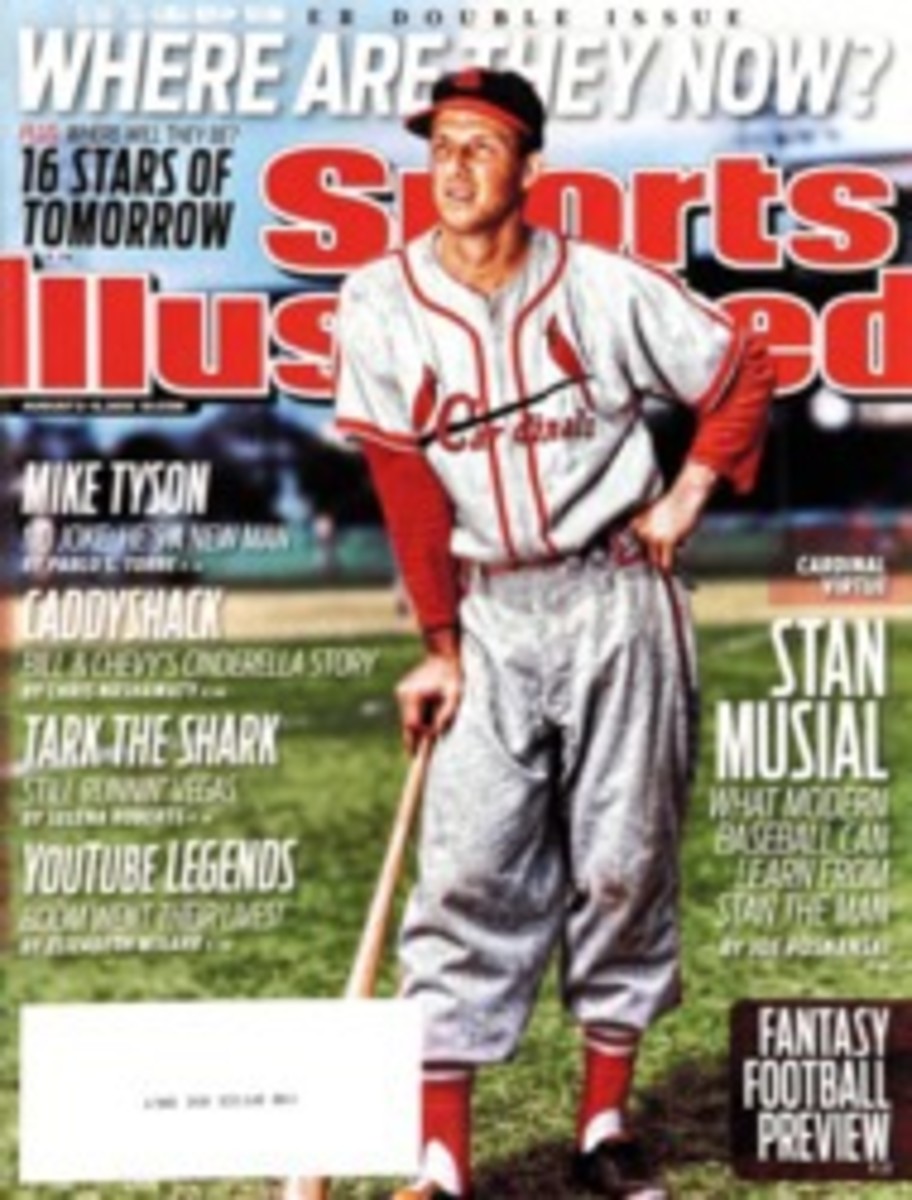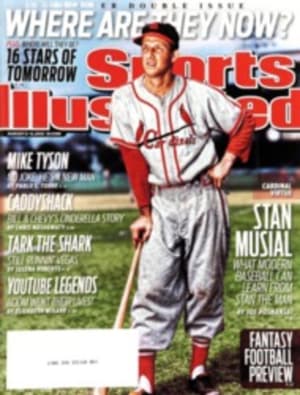
Anthony Sandoval
It's 6 a.m. on a Wednesday in Los Alamos, N.Mex., and the Sandoval house is alive. The garage door is about to rumble open, and Anthony Sandoval, winner of the 1980 U.S. Olympic Trials marathon, will walk out with a smile as bright as the sun that's dangling over the Jemez Mountains. Just as he has most mornings for the last 40 years, Sandoval is about to go for a run. After that, he'll head five blocks from home to the Los Alamos Medical Center, where he works as the town's lone cardiologist.
His smile is especially gleaming today, because three of his kids (there are six in all, five current or former D-I athletes, and one still in high school) will come along on the run. Analisa, 21, and Marisa, 23, are home, having just finished their college running careers at Notre Dame and Washington State, respectively, and Benigno, 19, is back after his freshman year as a pole vaulter at Notre Dame.
By 6:15, Team Sandoval will hit the trail, and the stride that carried Anthony to a U.S. Olympic Trials record (2:10:19) that stood from 1980 to 2007 will be on display. The stride hasn't changed a bit. At age 56, the 5'8" Sandoval weighs 130 pounds, barely 15 more than he did in his prime, and his Nikes alight as delicately on the rocks as butterflies. From a distance, as Sandoval weaves through the ponderosa pines, his feet appear to hardly come off the trail, giving the impression of a wraith skimming along the forest floor. On some of his trail runs, Sandoval will stop to touch familiar rocks or trees, "old friends," he calls them, some of which have stood sentinel over the path since before his Spanish-American forebears came to New Mexico more than 400 years ago, in the time of the conquistadors.
Sandoval and his wife, Mary, whom he met when both were students at Stanford, still wonder if that economical gait could have carried him to the top of the medal stand at the 1980 Olympic Games in Moscow, where he would have been one of the favorites. Would have, that is, had President Jimmy Carter not directed that the U.S. join 64 other countries in boycotting the Games to protest the Soviet invasion of Afghanistan. The move left 466 U.S. athletes with dreams denied.
By the next Games, Olympic-hopeful runners were allowed to accept prize money for the first time, and some went on to carve out lucrative careers. But Sandoval was immersed in his medical career and passed up any possible paydays. Likewise, he never had the sustained training of a professional athlete, as did almost all of his running peers, and in three more Olympic trials he failed to qualify. "It was just the misfortune of the timing," says Frank Shorter, who won America's last gold in the men's Olympic marathon, in 1972. "Tony probably was at that point the fastest runner in the world."
It isn't something Sandoval dwells on. After all, he has plenty to occupy his time: those six kids (ages 15 to 28) and a work schedule that is generally about 8 a.m. to 8 p.m. He spends his days evaluating arrhythmias and installing pacemakers—he's one of only two people in northern New Mexico who do that—and on Thursday and Friday, he drives two hours to Albuquerque to be the on-call cardiologist at three hospitals. Those nights, four hours of sleep is a luxury. Besides all that, Sandoval is on so many medical boards and committees that he resorts to counting on his fingers to list them all. He is the head of New Mexico's chapter of the American College of Cardiology, which means he will help guide the state through health-care reform in a way that will, hopefully, contain costs without sacrificing quality cardiovascular care. All in a week's work.
It is in the rare moments when he slows down, when he's sitting with Mary, who for years brought him bagels and juice at the end of a particularly mountainous 17.5-mile "breakfast run," that the Olympic-sized hole in his gut can start to spread. "It just hurts when you start thinking about it," Sandoval says. "It's a miss. You think, 'Gosh, if you only could have done that.' Mary and I get sad about it periodically. I'd probably get sad about it now if I talked about it some more."
Can you imagine? is a phrase that Sandoval can work into just about any conversation. "Can you imagine if I had really trained for that race?" for example, referring to a 2:14 marathon he ran in 1979, an outlandish performance given he was training only 35 miles a week during med school at Colorado. Sandoval can imagine a lot. He's had to, to go from growing up in an adobe house in Truchas, N.Mex., to earning a mechanical engineering degree at Stanford. Truchas, a farming town of 1,200, is where a driver heading north toward the Sangre de Cristo Mountains comes abruptly to the end of the paved road.
When Sandoval was growing up as one of six Truche√±os kids, the family had no phone. College coaches sent their recruiting letters—and when you're a four-time state champ in both cross-country and track and an A student, that's a pile of paper—to Los Alamos High, an hour away. The first in his family to finish college, Sandoval applied only to Harvard, was given an academic scholarship and even put down his housing deposit. Then a Stanford coach called and told him that the university was just like Harvard but with better weather. So Stanford it was.
It takes more imagination still to envision a cardiology career when the first meaningful medical interaction of your life was a visit to the dentist in ninth grade. But the more Sandoval talks about his childhood, the more sense it makes. He grew up watching his aunts and uncles and friends disappear for months at a time to find jobs; to Utah to work as shepherds, to Las Vegas to work in construction, or to Grants, N.Mex.—"Uranium City, USA"—to work in the mines. "Everybody I grew up with was out migrating," Sandoval says. "I wanted something that meant I would have a job."
These days the only migration is toward his office. On a typical day Sandoval sees a constant stream of patients, many of whom drive an hour or more from such cities as Dulce, which is an underhanded stone's throw from Colorado. He flips casually between English and formal Spanish with his patients ("Hello! ¬øCómo estàn?"), and like a good coach, always leaves on a positive ("You have to stop smoking a pack a day. But your cholesterol looks great!"). Several of America's poorest counties are in northern New Mexico, but nobody who comes to Sandoval's office, insured or not, is turned away. From one patient whom Sandoval has guided through recovery from a heart attack, he asks only $5 a month. He could move his practice to Albuquerque and increase his income 50%. But, he says, "this is home. And it's a service that needs to be provided."
There is an old Spanish saying: Viejo es el viento, pero todavía sopla. Old is the wind, but it still blows.
Running remains a huge part of Sandoval's life. He has helped with track meets at Los Alamos High while his kids have passed through, and the years seem not to have deadened his competitive streak. Just ask his oldest child, Magdalena, who was an outstanding distance runner at Oregon but couldn't hold off Dad on the anchor leg of the Los Alamos Triathlon a few years ago. He gave her a cheerful "How's it going?" on his way by. Running is such a current in the Sandoval family that a chart tracking each family member's face-plants on the local trails is posted near the kitchen table.
And Sandoval's pulse still races when he watches video of the critical moments of the 1980 trials in Buffalo: In mile 22 Sandoval runs a 4:44 to take the lead from Benji Durden and then blows the race open with a 4:48 in mile 23. "Pretty nice stride," he whispers. Unless you ask who builds the sturdiest fences in Truchas, where he and Mary own 200 acres, talking about that winning stride is the only time you'll hear Sandoval brag. And this is where the most heart-wrenching Can you imagine? comes in. "Can you imagine, in terms of the kids, if I was a gold medalist?" Sandoval says. "Man, would they be proud."
Sandoval's first Olympic miss was at the 1976 marathon trials, when, on only the training he'd been doing for college track, he finished fourth, one spot off the team. In '84 he placed sixth, and in '88, deeply immersed in his medical career, Sandoval barely trained and finished 27th. For his last shot, in '92, he got serious again and was in great shape, only to rupture his Achilles tendon in mile eight. "I think sometimes he wishes he'd taken more time off from medicine to train," says Mary.
The winner of the 1980 Olympic marathon was East Germany's Waldemar Cierpinski. In 1998 documents emerged that implicated a number of East German athletes in the nation's systematic doping program, Cierpinski among them. "He wasn't overly dominant," says Sandoval. "I would've loved to be on the line with him."
But even if Sandoval was destined to go medalless, it's the lost racing that he mourns. The moments between the gun and the Olympic finishing line that are utterly irreplaceable. "All you want to do is find out what you can do," says Shorter.
Remarkably fit and with a lifetime of altitude training in New Mexico, Sandoval still has some race left in him. He's thinking of trying master's competitions once Teresa, his youngest, graduates from high school in three years. Not that any age-group race will ever replace the one that got away.
"I never got to run as hard as I can," Sandoval says. "I ran hard, but I never got in that position to run as fast as I could." Can you imagine if he had?
"It just hurts when you start thinking about it," Sandoval says of his Olympic miss. "You think, 'If you only could have done that.'"
PHOTO
Photograph by KAREN KUEHN
NO FINISH LINE Thirty years after his record-setting win in the Olympic trials (left) Sandoval still runs daily on the trails near his home in Los Alamos.
PHOTO
MANNY MILLAN
[See caption above]
PHOTO
Photograph by KAREN KUEHN
HEART-TO-HEART His work as a cardiologist helps Sandoval keep his finger—literally—on the pulse of his northern New Mexico community.

